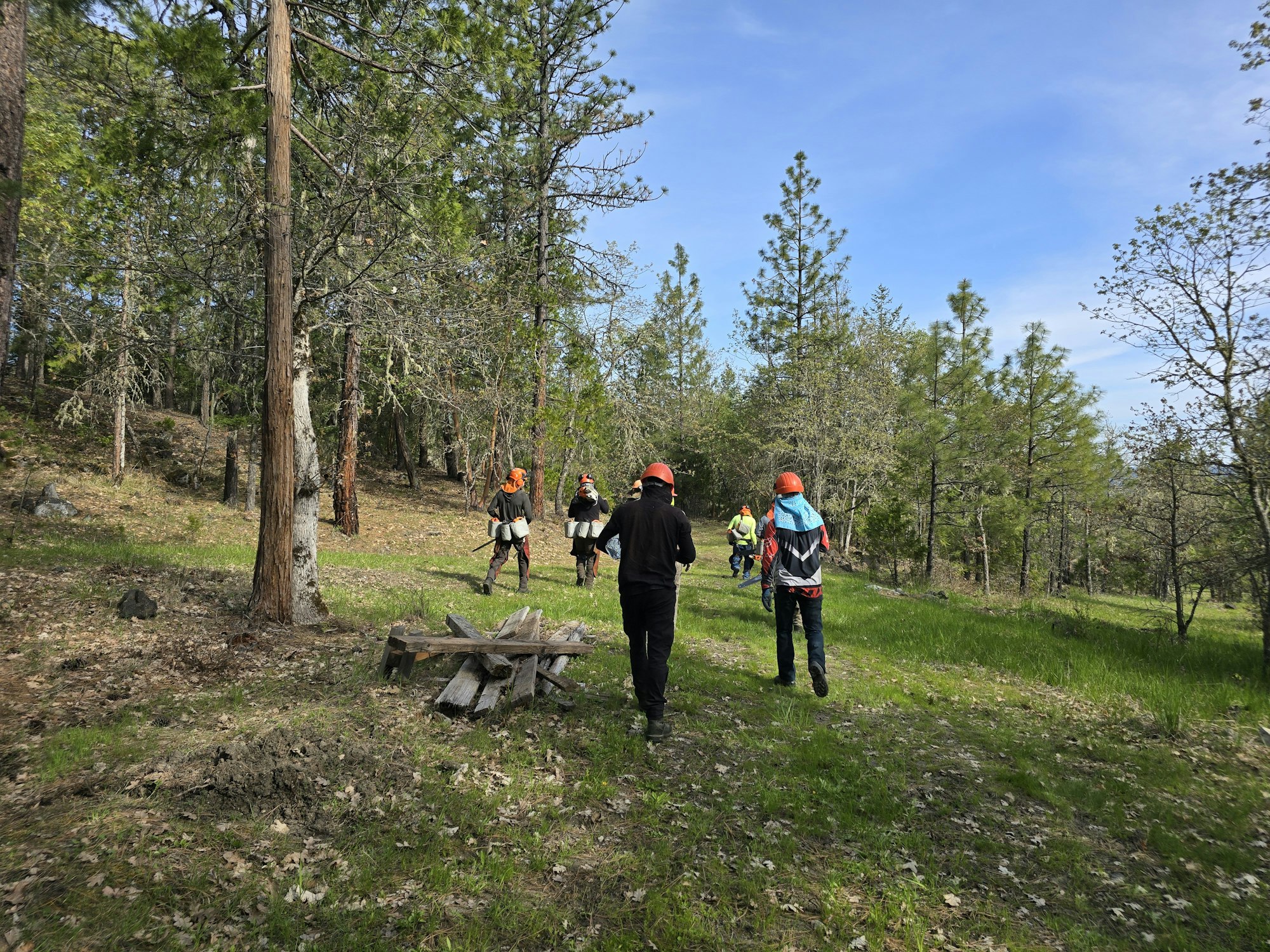River Butte Wildfire Resiliency Project
River Butte Wildfire Resiliency Project
Location: Big Butte Creek watershed, between Crowfoot Road and Big Butte Springs
Partners: ODF, NRCS, Medford Water Commission

The Big Butte Creek watershed is vital to the Rogue Valley, serving as a primary source of drinking water. Climate change, fire suppression, and frequent human-caused ignitions elevate the risk of devastating wildfires that could harm these water sources. To mitigate this risk, the River Butte Wildfire Resiliency Project implements climate-smart forestry practices to reduce wildfire intensity and enhance the resilience of these forests.
The project will focus on three priority zones:
- Areas near drinking water sources (surface and groundwater)
- Areas near major ingress/egress roads
- Private lands adjacent to Medford Water Commission infrastructure
The goal is to modify fire behavior to achieve a future condition of low-to-moderate intensity, improving the health of the Big Butte Springs and Creek watersheds and their tributaries. This work complements the recovery efforts following the 2020 South Obenchain Fire, which burned over 32,600 acres and destroyed more than 100 structures.

Project Status:
Forest resiliency and hazardous fuels treatments have been completed on 17 properties totaling 1000 acres around Butte Falls, on North Obenchain Road, and along Butte Falls Highway. This grant also supported critical fuels reduction work on Medford Water Commission lands, contributing to long-term protection for the central Rogue Valley’s drinking water. The project also supported forest restoration treatments on the Butte Falls Community Forest, providing additional protection for over 50 homes in the town of Butte Falls and restoring a treasured community recreational resource.

